[Editor’s Note: Mad Scientist Laboratory is pleased to publish today’s post by returning guest blogger Mr. Ian Sullivan, addressing the paramount disruptor — people and ideas. While emergent technologies facilitate the possibility of change, the catalyst, or change agent, remains the human with the revolutionary idea or concept that employs these new tools in an innovative way to bring about change in the character of future warfare.]

There is a passage in Erich Maria Remarque’s All Quiet on the Western Front that has always colored my views on the future. In it, Alfred Kropp, the thoughtful school pal of main character Paul Bäumer, is having a discussion with his friend about a war that has metastasized from a youthful, joyous adventure into a numbingly horrific slog.
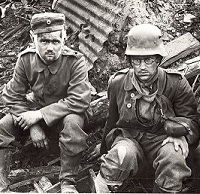
“But what I would like to know,” says Albert, “is whether there would not have been a war if the Kaiser had said No.”
“I’m sure there would,” I [Paul] interject, “he was against it from the first.”
“Well if not him alone, then perhaps if twenty or thirty people in the world had said No.”
“That’s probable,” I agree, “but they damned well said Yes.”
Ruminating on the First World War, a conflict that most leaders of the day thought would be over in a few weeks, but one that futurists should have realized would become something else altogether, Alfred and Paul hit upon a salient point. European armies met for a battle they could not imagine. Generals versed in Napoleon suddenly faced a true industrial age war. Sure, there were signs hinting at what could come. The post-Gettysburg U.S. Civil War, for example, offered a glimpse of this type of fight, as did the Franco-Prussian War, and even the Second Anglo-Boer War.
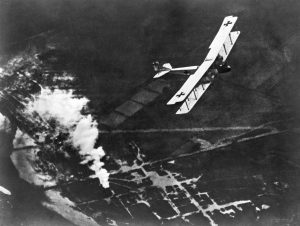
In a total war, pitting society against society, where the battlefield was dominated by rapid-firing artillery, machine guns, and chemical warfare; where whole societies were pitted against each other to match the industrial requirements of the war, to sustain and reconstitute fighting forces; and where the civilian populations were directly targeted by naval blockades, aerial bombardment,

and other deprivations, it is easy to see the critical role that technology played. However, Alfred and Paul remind us that no matter how much technology advances, or how it shapes the world, the most significant, relevant, and system-altering changes come not from technology, but from people and the ideas and beliefs that shape their behaviors and enable decisions.
The world of today, looking forward, is at least reminiscent of the pre-Great War period. Technology is advancing rapidly; indeed, it is advancing so fast that changes in the way we live, create, think, and prosper are occurring at a dizzying pace. New and converged technologies have led us to question what shape society will take, and dramatic changes which were once only the province of science fiction seemingly become science fact at a swift clip. Information technology, artificial intelligence, quantum computing, robotics, additive manufacturing, and other technological advances have increased or soon will further expand the speed of human interaction. 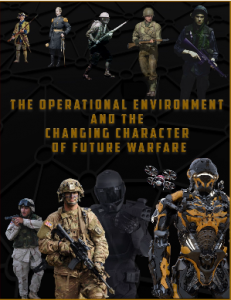 These technologies already have changed society, and will continue to do so as they mature, spawn convergences, and lead to the creation of a new series of technological wonders. TRADOC’s “Operational Environment and the Changing Character of Future Warfare” asserts the future is governed by two drivers; the rapid societal change spurred by these technological advances and the changes these advances will have on the character of warfare. But this assessment may be incomplete, or perhaps it is too deterministic in nature, because at the end of the day, there is a third driver, and it deals with people and ideas.
These technologies already have changed society, and will continue to do so as they mature, spawn convergences, and lead to the creation of a new series of technological wonders. TRADOC’s “Operational Environment and the Changing Character of Future Warfare” asserts the future is governed by two drivers; the rapid societal change spurred by these technological advances and the changes these advances will have on the character of warfare. But this assessment may be incomplete, or perhaps it is too deterministic in nature, because at the end of the day, there is a third driver, and it deals with people and ideas.
The latter part of the Nineteenth and early part of the Twentieth Centuries also were dominated by advances in technology. We saw industrialization on a massive scale, the development of internal combustion engines, aviation, telephony, the widespread use of railroads, and other remarkable changes. Alfred and Paul must have thought that the pace of human interaction was increasing exponentially. Yet, while these technologies clearly had societal impacts, they were not transformational on their own. Indeed, they served only to reinforce the power structures that stemmed from the end of the Enlightenment and the reaction to the French Revolution and Napoleon. For as much as society changed, for as much as sub-groups were empowered, as much as “super-empowered individuals” like Andrew Carnegie, John D. Rockefeller, Henry Ford, or the Krupp family garnered influence and even some power, it was a handful of individuals – Alfred postulated 20 or 30 – who made the decision to go to war in 1914.
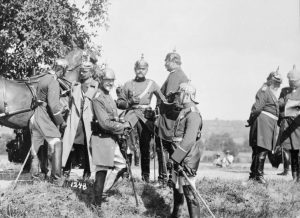
And in spite of the technological advances of the era, it was the thought processes and ideals generated – a time when Marxism, nationalism, imperialism, social Darwinism, and existentialism, among other schools of thought were developed and refined – that influenced these 20 or 30 individuals who held in their hands the fate of the world in August 1914, and the multitudes of others who would see the war that transpired to the end.
So again, why is this important to the futurist? Because we see technological marvels and focus on their impact, noting that they will drive change that will compel society to follow. Technology is exciting, and its prospects are wondrous. It can and will drive change. But it does not drive change alone; ideas and people still play a role. The spark that caused the First World War,
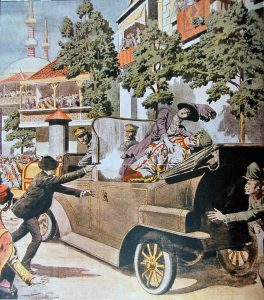
Gavrilo Princip’s assassination of Archduke Franz Ferdinand, was lit by one man but driven by Princip’s exposure to nationalism. The Russian Revolution, triggered as a popular reaction against the war and the ruling Romanov dynasty certainly was guided by ideology across many spectrums. Idealism also went hand-in-hand with the American perception of World War I, as a nation geared up in a spasm of Wilsonian idealism to “make the world safe for democracy” and to fight “a war to end all wars.” In the end it was the convergence of ideas, human decision-making, and technology that drove change, in this case, the onset of World War I.
A casual glance at newspaper, or more likely, scanning news notifications on your smart phone, shows us a world that is in large part driven by thought, ideal, and belief. In spite of technology, the speed of human interaction, and global connectivity, we see a retrenchment of globalization and an assertion of nationalism and regionalism around the globe. Whether it be China’s expansionist “One-Belt, One-Road Initiative,” Russia’s adventurism in the Near Abroad and Syria, Brexit in the UK, or a renewed focus on “America-First” from Washington, a renewed sense of nationalism is evident worldwide. Additionally, autocratic regimes are experiencing something of a resurgence; Kim Jong Un in North Korea, Vladimir Putin in Russia, and even a Saudi Royal Family that is now under suspicion of murdering a journalist. We’ve also seen China putting up walls on Internet accessibility and a focus by state actors on crafting narratives aimed at influencing subsections of populations and fostering dissent within rival nations. Individuals too, like Princip before them, also can play a role.
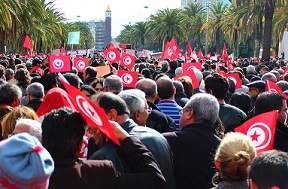
The Arab Spring, for example, was sparked by one man in Tunisia with a grievance, but soon went viral on Social Media and led to a significant change in the Middle East. In these cases, technology may serve not as a driver, but instead as an enabler of the human driver.
As a futurist, I am concerned when so much of our effort focuses on one aspect of change, in this case, technology. I have attended many events focusing on the future, read a number of authors who focus on the radical changes AI or quantum computing will have on society, and seen many very similar interpretations of the way the future will unfold. Indeed, views of the future are coalescing around technological innovation compelling broader societal changes. It is clear that technology is a driver that needs to be studied.
But it is equally important to understand what drives thought and belief, and how these can be shaped and influenced, for both good and nefarious purposes. My intention in starting with Remarque was not to force a dystopian or deterministic view of the future. Nor am I falling back on George Santayana’s observation about a failure to learn history. History is important, as it shows us how events unfolded, and allows us to understand how problems developed; however, I do not believe we are doomed to repeat August 1914.  But I do believe that we need to spend as much time looking at the intellectual, emotional, and even popular Zeitgeist to understand how people view the world and make decisions in light of all of the changes that technology is bringing around us. We need to learn not only what is happening, but must ask ourselves the hard “why?” and “so what?” questions, lest we be unable to understand and warn our leaders during some crisis in August 2028.
But I do believe that we need to spend as much time looking at the intellectual, emotional, and even popular Zeitgeist to understand how people view the world and make decisions in light of all of the changes that technology is bringing around us. We need to learn not only what is happening, but must ask ourselves the hard “why?” and “so what?” questions, lest we be unable to understand and warn our leaders during some crisis in August 2028.
If you enjoyed reading this post, please also see:
Lessons Learned in Assessing the Operational Environment, by Ian Sullivan.
Character vs. Nature of Warfare: What We Can Learn (Again) from Clausewitz, by LTC Rob Taber.
Ian Sullivan is the Assistant G-2, ISR and Futures, at Headquarters, TRADOC.



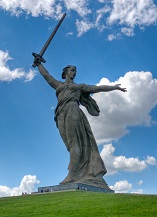 Russia’s move to adopt a national cryptocurrency, the cryptoruble, as a means of asserting its digital sovereignty and ensuring national security. The advent of the cryptoruble will have geopolitical ramifications far beyond Mother Russia’s borders, potentially ushering in an era of economic hegemony over those states that embrace this supranational cryptocurrency. (Note: Some of the embedded links in this post are best accessed using non-DoD networks.)]
Russia’s move to adopt a national cryptocurrency, the cryptoruble, as a means of asserting its digital sovereignty and ensuring national security. The advent of the cryptoruble will have geopolitical ramifications far beyond Mother Russia’s borders, potentially ushering in an era of economic hegemony over those states that embrace this supranational cryptocurrency. (Note: Some of the embedded links in this post are best accessed using non-DoD networks.)]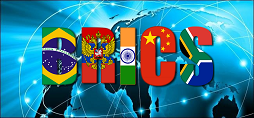 nations [Brazil, Russia, India, China, South Africa], which would continue to work in the event the global Internet malfunctions.”
nations [Brazil, Russia, India, China, South Africa], which would continue to work in the event the global Internet malfunctions.”  While an Internet alternative (or
While an Internet alternative (or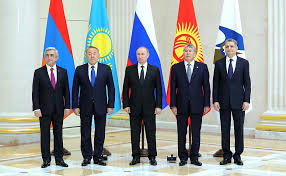 for the ‘Digital Economy,’ including plans to develop [it in] the EAEU.”
for the ‘Digital Economy,’ including plans to develop [it in] the EAEU.” The cryptoruble could be used to affect geopolitical relationships. In addition to wielding untraceable resources, Russia could also leverage this technology to join forces with some countries against others. According to the plan President Putin laid out upon announcing the launch of a cryptoruble, Russia would form a “single payment space” for the member states of the EAEU, based on “the use of new financial technologies, including the technology of distributed registries.”
The cryptoruble could be used to affect geopolitical relationships. In addition to wielding untraceable resources, Russia could also leverage this technology to join forces with some countries against others. According to the plan President Putin laid out upon announcing the launch of a cryptoruble, Russia would form a “single payment space” for the member states of the EAEU, based on “the use of new financial technologies, including the technology of distributed registries.” This could significantly affect the balance of power not only in the region, but also in the world. Any country participating in such an economic agreement, however, would subject themselves to being overrun by a new hegemony, that of the supranational currency.
This could significantly affect the balance of power not only in the region, but also in the world. Any country participating in such an economic agreement, however, would subject themselves to being overrun by a new hegemony, that of the supranational currency.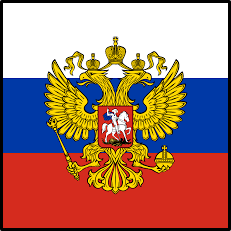 The Kremlin’s main proponent for digital sovereignty, Igor Ashmanov, claims, “Digital sovereignty is the right of the government to independently determine what is happening in their digital sphere. And make its own decisions.” He adds, “Only the Americans have complete digital sovereignty. China is growing its sovereignty. We are too.”
The Kremlin’s main proponent for digital sovereignty, Igor Ashmanov, claims, “Digital sovereignty is the right of the government to independently determine what is happening in their digital sphere. And make its own decisions.” He adds, “Only the Americans have complete digital sovereignty. China is growing its sovereignty. We are too.” The conspiracy theorists to the right of the administration suggest the “global world order” represented by the International Monetary Fund intends to leave Russia out of its new replacement reference currency, saying “Big Brother is coming to blockchain.”
The conspiracy theorists to the right of the administration suggest the “global world order” represented by the International Monetary Fund intends to leave Russia out of its new replacement reference currency, saying “Big Brother is coming to blockchain.” According to the Financial Times, “This interest in cryptocurrencies shows Russia’s desire to take over an idea originally created without any government influence. It was like that with the Internet, which the Kremlin has recently learned to tame.”
According to the Financial Times, “This interest in cryptocurrencies shows Russia’s desire to take over an idea originally created without any government influence. It was like that with the Internet, which the Kremlin has recently learned to tame.”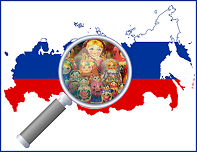
 control and manipulation — China’s use of facial recognition cameras to
control and manipulation — China’s use of facial recognition cameras to Cryptocurrencies and Distributed Ledger Technology (DLT), including blockchain, have clear implications for the Future Operational Environment — affecting domestic infrastructure, the race for information sovereignty, domestic politics, and geopolitics. What may appear to be a purely economic factor is being used as a lever to affect state access to citizens’ personal information, control of information flows, and foreign relations both at a regional and global level.
Cryptocurrencies and Distributed Ledger Technology (DLT), including blockchain, have clear implications for the Future Operational Environment — affecting domestic infrastructure, the race for information sovereignty, domestic politics, and geopolitics. What may appear to be a purely economic factor is being used as a lever to affect state access to citizens’ personal information, control of information flows, and foreign relations both at a regional and global level. Cryptocurrencies, untethered from traditional economic paradigms, can be used for illicit transactions in support of crime and terrorism, proliferation, countering sanctions, and potential existential economic threats. If money is an idea based on trust, understanding it is an information-related capability. A country’s degree of digital sovereignty can have both foreign policy and military consequences, so the race to control information is a significant effort in
Cryptocurrencies, untethered from traditional economic paradigms, can be used for illicit transactions in support of crime and terrorism, proliferation, countering sanctions, and potential existential economic threats. If money is an idea based on trust, understanding it is an information-related capability. A country’s degree of digital sovereignty can have both foreign policy and military consequences, so the race to control information is a significant effort in The beauty of the cryptoruble, from the administration’s standpoint, is that it “bring(s) under its control a technology in complete anarchy,”
The beauty of the cryptoruble, from the administration’s standpoint, is that it “bring(s) under its control a technology in complete anarchy,” The cryptoruble is the ultimate foil to any desire by individual citizens to protect their privacy and anonymity, providing for “protection” by the state for the greater good for all its citizens. In this way, President Putin’s Digital Economy project, a political platform, deftly works towards full digital sovereignty and information sovereignty on the foundation of technological sovereignty and in the name of national security.
The cryptoruble is the ultimate foil to any desire by individual citizens to protect their privacy and anonymity, providing for “protection” by the state for the greater good for all its citizens. In this way, President Putin’s Digital Economy project, a political platform, deftly works towards full digital sovereignty and information sovereignty on the foundation of technological sovereignty and in the name of national security. A state-issued blockchain currency could also bring order – via total control – to all government documentation processes. DLT has already been proposed as a system for recording real estate transactions, the argument being they would be processed faster than paper documentation and are a matter of public record. While banks may process credit requests faster, a centralized information hub may actually provide all the information the state knows about the applicant at the touch of a button, via an “interagency electronic cooperation system,” with data on marriages and divorces, births, and deaths; “all the data about an applicant’s family situation;” data regarding the Pension Fund of the RF; “about their place of work and payments made into the fund;” and about their immigration status, in addition to their actual credit history.
A state-issued blockchain currency could also bring order – via total control – to all government documentation processes. DLT has already been proposed as a system for recording real estate transactions, the argument being they would be processed faster than paper documentation and are a matter of public record. While banks may process credit requests faster, a centralized information hub may actually provide all the information the state knows about the applicant at the touch of a button, via an “interagency electronic cooperation system,” with data on marriages and divorces, births, and deaths; “all the data about an applicant’s family situation;” data regarding the Pension Fund of the RF; “about their place of work and payments made into the fund;” and about their immigration status, in addition to their actual credit history. Once blockchain-based processes become the norm for doing business in Russia, several sources suggest the next step could be using biometrics to verify identity. Perhaps with the one added benefit of never having to remember a password again, the Russian banking system could soon move to a system of virtual identity verification via biometrics.
Once blockchain-based processes become the norm for doing business in Russia, several sources suggest the next step could be using biometrics to verify identity. Perhaps with the one added benefit of never having to remember a password again, the Russian banking system could soon move to a system of virtual identity verification via biometrics. One cryptocurrency that could be controlled if needed is Byteball, so called for the shape of its chains. Like “traditional” cryptocurrency payments, Byteball transactions take place cryptowallet to cryptowallet, yet Byteball has a parallel, non-transparent system called “blackbytes” whose transactions are both visible in a public ledger and untraceable. These coins could be used when transactions “need to be concealed, for example, in funding secret programs.”
One cryptocurrency that could be controlled if needed is Byteball, so called for the shape of its chains. Like “traditional” cryptocurrency payments, Byteball transactions take place cryptowallet to cryptowallet, yet Byteball has a parallel, non-transparent system called “blackbytes” whose transactions are both visible in a public ledger and untraceable. These coins could be used when transactions “need to be concealed, for example, in funding secret programs.”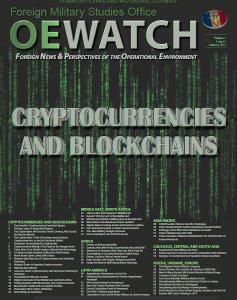 For a deeper dive into this topic, go to the TRADOC G-2’s Foreign Military Studies Office (FMSO)
For a deeper dive into this topic, go to the TRADOC G-2’s Foreign Military Studies Office (FMSO) 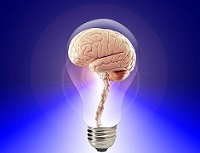
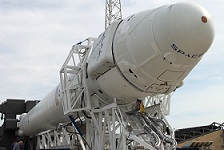
 The dramatic shift in the funding, driving, and demand signals of innovation from the U.S. Government to the commercial sector will lead to a critical need for agile prototyping and experimentation in the military, focusing on niche areas of interest to the Government.
The dramatic shift in the funding, driving, and demand signals of innovation from the U.S. Government to the commercial sector will lead to a critical need for agile prototyping and experimentation in the military, focusing on niche areas of interest to the Government.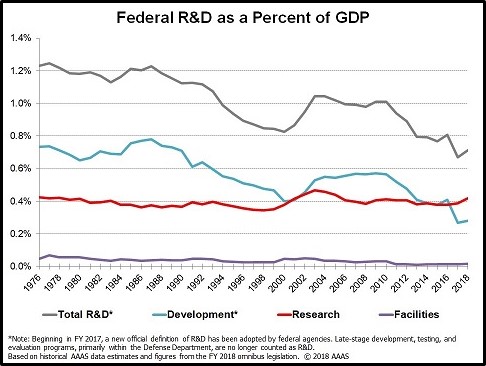

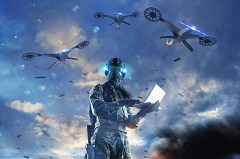 • The employment of small aerial drones for Intelligence, Surveillance, and Reconnaissance (ISR) will continue, making concealment difficult and eliminating distance from opposing forces as a means of counter-detection. This will require the development and use of decoy capabilities (also intelligent robotic devices). This counter-reconnaissance fight will feature prominently on future battlefields between autonomous sensors and countermeasures – “a robot-on-robot affair.”
• The employment of small aerial drones for Intelligence, Surveillance, and Reconnaissance (ISR) will continue, making concealment difficult and eliminating distance from opposing forces as a means of counter-detection. This will require the development and use of decoy capabilities (also intelligent robotic devices). This counter-reconnaissance fight will feature prominently on future battlefields between autonomous sensors and countermeasures – “a robot-on-robot affair.” • The continued proliferation of intelligent munitions, operating at greater distances, collaborating in teams to seek out and destroy designated targets, and able to defeat armored and other hardened targets, as well as defiladed and entrenched targets.
• The continued proliferation of intelligent munitions, operating at greater distances, collaborating in teams to seek out and destroy designated targets, and able to defeat armored and other hardened targets, as well as defiladed and entrenched targets.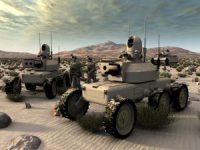 • Increasing reliance on unmanned systems, “with humans becoming a minority within the overall force, being further dispersed across the battlefield.”
• Increasing reliance on unmanned systems, “with humans becoming a minority within the overall force, being further dispersed across the battlefield.”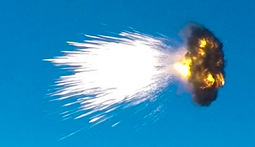 • Intelligent munitions will be neutralized “primarily by missiles and only secondarily by armor and entrenchments. Specialized autonomous protection vehicles will be required that will use their extensive load of antimissiles to defeat the incoming intelligent munitions.”
• Intelligent munitions will be neutralized “primarily by missiles and only secondarily by armor and entrenchments. Specialized autonomous protection vehicles will be required that will use their extensive load of antimissiles to defeat the incoming intelligent munitions.”
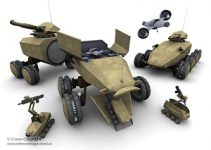
 • “To gain protection from intelligent munitions, extended subterranean tunnels and facilities will become important. This in turn will necessitate the tunnel-digging robotic machines, suitably equipped for battlefield mobility.”
• “To gain protection from intelligent munitions, extended subterranean tunnels and facilities will become important. This in turn will necessitate the tunnel-digging robotic machines, suitably equipped for battlefield mobility.”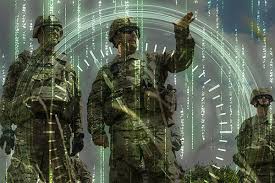 • All of these autonomous, yet simultaneously integrated and networked battlefield systems will be vulnerable to Cyber-Electromagnetic Activities (CEMA). Consequently, the battle within the Cyber domain will “be fought largely by various autonomous cyber agents that will attack, defend, and manage the overall network of exceptional complexity and dynamics.”
• All of these autonomous, yet simultaneously integrated and networked battlefield systems will be vulnerable to Cyber-Electromagnetic Activities (CEMA). Consequently, the battle within the Cyber domain will “be fought largely by various autonomous cyber agents that will attack, defend, and manage the overall network of exceptional complexity and dynamics.”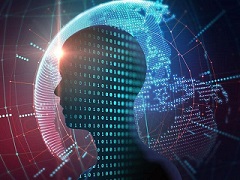 • The “high volume and velocity of information produced and demanded by the robot-intensive force” will require an increasingly autonomous Command and Control (C2) system, with humans increasingly being on, rather than in, the loop.
• The “high volume and velocity of information produced and demanded by the robot-intensive force” will require an increasingly autonomous Command and Control (C2) system, with humans increasingly being on, rather than in, the loop.